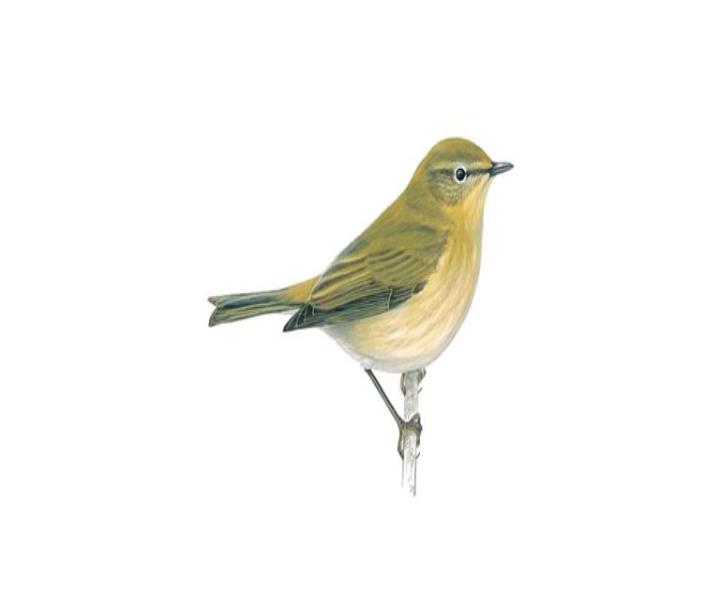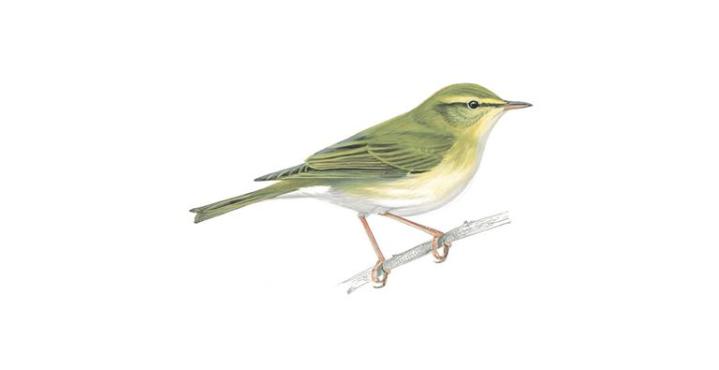Listen to a Virtual Dawn Chorus Walk
April 2020
We'll start in the virtual carpark (imagine Rowantree) where we would hear straight way the local Blackbird and Robin singing nearby, plus both Blue and Great Tits in the nearby woodland. (In the background we may also hear Woodpigeon and drumming Great Spotted Woodpecker, and distant Pheasant, Carrion Crow and Jackdaw.) Setting off along the trail we soon hear the persistent songs of Chiffchaff proclaiming their territories in the birch woodland. Not to be confused with the rather similar Great Tit - note the slower metronomic sound of the former ("chiff - chiff, chiff - chaff") compared to the quicker song of the tit (mnemonic: "teacher, teacher"). Soon we will hear a Willow Warbler - closely related and very similar in appearance but with a very different song - a distinctive descending, rather plaintive song (and not to be confused with the not too dissimilar but quicker song of the Chaffinch.) Both Chiffchaff and Willow Warbler also have a rather distinctive hweet (Chiffchaff) hweet (Willow Warbler) call. You will remember, I hope, the subtle markings to tell these two species apart - duller plumage, indistinct supercilium (the pale stripe above the eye) and dark legs for the Chiffchaff, and brighter greenish colouration, stronger supercilium, and pale flesh-coloured legs on the Willow Warbler. These are just generalisations of course and these features often overlap.
Also in the same area we will hopefully pick up the beautiful loud fluid song of a Blackcap, often compared to the song of a Nightingale (which doesn't occur up here).
Moving on down the trail into a more scrubby area with scattered gorse and broom, we will hear the "little bit of bread and no cheeeese" song of a Yellowhammer and hidden away down at the bottom of the bushes the rather sweet song of a Dunnock. There may also be some Goldfinches around with their twittering song and calls. Further up the slope in the taller pines, a Song Thrush will be giving its loud repetitive three- or four-note song while a hidden Wren will be belting out its song too - such a noise from such a small bird.
As we leave the area of scrub and enter an area of conifers we will hear, but maybe not see a Goldcrest, very high pitched and possibly out of the hearing range of some people, and higher up the calls of Coal Tits. At the tops of the trees there may be a small flock of Crossbills - listen out for their distinctive jip, jip call, and may be their pleasant song, though since they breed very early in the year most will have ceased their territorial song by now. And there will almost certainly be some Siskins.
Returning back along the trail, with continuing songs of Chiffchaffs and Willow Warblers around us, we will turn up along a higher trail through the conifer plantation. A Jays screech will punctuate the generally quiet conifers. We emerge into the more open woodland above Pittodrie House with scattered Caledonian Pines and see Tree Pipit exhibiting their parachuting territorial trill, while a chittering flock of Long-tailed Tits pass by. Further up the slope onto the heather moorland Skylarks will be singing and the far-reaching mew of a Buzzard circling over the tree tops may well be heard. Hopefully most folk will be very familiar with these common sounds of our countryside.
And so wandering slowly back to the carpark the chorus gradually diminishes as the morning wears on and gradually the forest goes quiet.
I hope you enjoyed our early morning 'walk' and will come back again, hopefully in happier times.
All the best
John

